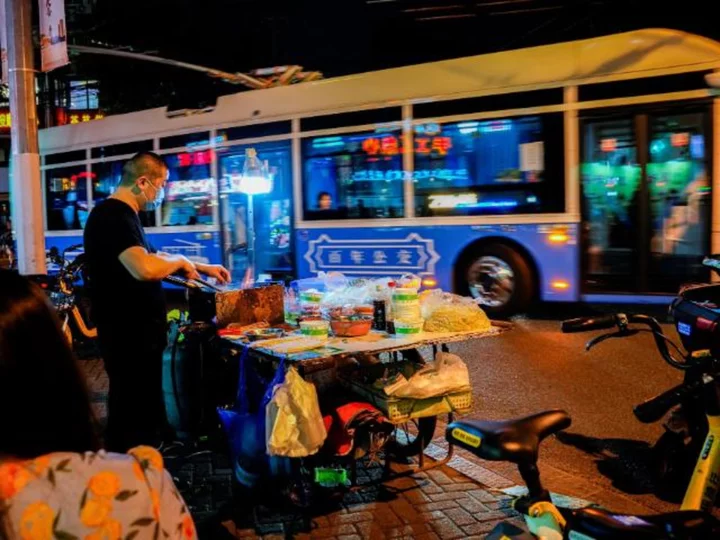
7 skills to teach your daughter by age 13
A preteen girl is at a unique moment in her life. The spark that is
2023-10-18 06:20

Nestlé recalls Toll House cookie dough for potentially containing fragmented wood chips
Nestlé USA is recalling a “limited quantity” of its Toll House Chocolate Chip Cookie Dough “break and bake” after fragmented pieces of wood were found in some packages. On 10 August, the food and drink corporation announced the news in a press release published on its website. According to the company, it had identified two batches of the 16.5 oz product produced on 24 and 25 April as being the reason for the recall, “due to the potential presence of wood fragments”. “This recall does not involve any other Nestlé Toll House products, including other varieties of refrigerated cookie dough in ‘break and bake’ bars, rolls, or tubs, or Edible cookie dough,” the statement read. Nestlé directed consumers’ attention to the recalled batch codes to avoid, both 16.5 oz bags with 311457531K or 311557534K. The company warned people who have already purchased these batches to “not prepare or consume the product” and urged them to “return the product to the retailer where it was purchased for a replacement or refund”. There have been no reported injuries or illnesses related to the recall, according to the confectioners. “We are taking this action out of an abundance of caution after a small number of consumers contacted Nestlé USA about this issue,” the release proclaimed. “The quality, safety and integrity of our products remain our number one priority. We sincerely apologise for any inconvenience this action represents to both our consumers and retail customers.” Nestlé also said it is in contact with the US Drug and Food Administration (FDA) about the recall, according to their press release. Anyone in need of support or with any further questions is encouraged to contact the company’s customer service line at (800) 681-1678 Monday through Friday, between 9am and 6pm ET. The recall comes after Nestlé voluntarily recalled its Stuffed Chocolate Chip Cookie Dough with Fudge Filling because of the “potential presence of white plastic pieces” in October of 2022. The Independent has contacted Nestlé for further comment. Read More Advocates sue federal government for failing to ban imports of cocoa harvested by children Sugary cereals and yoghurts must remove child-friendly packaging – health group Nestle reveals reason behind price increase of its most popular chocolate bar
2023-08-16 00:24

The best pillows for a better night's sleep
This content originally appeared on Mashable for a US audience and has been adapted for
2023-07-31 18:51

3 tips for using Google's Bard AI chatbot more effectively, according to Google itself
An AI chatbot can be neat — a fun thing to play with — but
2023-08-18 23:47

Walgreens Honors Veterans, Active Duty Military and Families with Weekend Discount in Honor of Independence Day Saturday, July 1 through Tuesday, July 4
DEERFIELD, Ill.--(BUSINESS WIRE)--Jun 22, 2023--
2023-06-22 20:26

NYC Using AI To Track Subway Fare Skippers
New York City is reportedly using artificial intelligence as a way to catch people trying
2023-07-23 04:52

How to View Saved Wi-Fi Passwords: All the Tricks and Hacks You Need to Know
Struggling to connect to Wi-Fi? Maybe your laptop is connected but your phone is not,
2023-10-19 05:17

Get lifetime access to millions of podcasts for $40
TL;DR: As of August 19, get a lifetime subscription to podcast app Podurama's Premium Plan
2023-08-19 17:55

Elon Musk claims Twitter login requirement just 'temporary'
It's just a "temporary emergency measure." That's what Twitter owner Elon Musk said on Friday
2023-07-01 06:27

Starving zoo animals and cucumber fines. China's indebted cities are desperate for cash
China's local governments are so debt-ridden that they are increasingly imposing what are perceived to be random or unjustified fines on residents in a bid to generate cash.
2023-09-21 09:49

Best Pre-Prime Big Deal Days: Amazon Fire TV Stick 4K $23, Fire TV Cube $110, More
Most people nowadays have a smart TV with built-in streaming programs—but what if you don’t?
2023-10-03 09:25

Coming years 'critical' to slash plastic pollution: UN
The world must halve single-use plastics and slash throwaway consumption to stem the tide of environmental pollution, according to a UN report on Tuesday that warns the...
2023-05-16 18:56
You Might Like...

Paris petanque paradise makes pitch to avoid eviction

Klobuchar says she supports abortion restrictions in late pregnancy

Renee Blair spills beans on pregnancy as she is expecting baby boy with husband Jordan Schmidt

'The View' host Ana Navarro calls leaving her dog ChaCha at home 'traumatic', internet says 'hang in there'

Tinder's new Matchmaker feature lets friends and family recommend matches

From And Just Like That To Bottoms: Why Plaid Is Film & TV’s Go-To Look Right Now

Russia bans 'international LGBT movement' for 'extremism'

American man arrested in Israel for smashing Roman statues in museum
